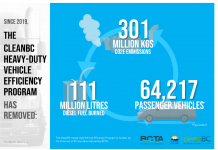The message is clear, operate safely or suffer the consequence. Insurance companies are paying closer attention to their trucking clients than ever before. After several high-profile collisions and the increase in so-called “nuclear verdicts” premiums are on the rise industry-wide.
Insurance is a great risk management tool, so good in fact that it is required in all North American jurisdictions. With the recent premium increases across the board carriers are going to have to have a long hard look at their safety programs. Some insurance companies are declining to renew or increasing premiums to those who do not demonstrate a commitment to safety. Every high-risk industry has experienced growing pains of the “every incident is preventable, no-blame” safety climate.
We must acknowledge that many of us have not been doing a good job thus far. We have made marginal improvements over the last decade or so in the safety realm most of which has been due to the mass-market adoption of vehicle safety technology and heightened crashworthiness of vehicles. Other than simulators & possibly dash cameras, driver training and supervision has remained stagnant. We rely on basic regulation published by the FMCSA & provincial governments to guide trucking’s safety program. I see the rising insurance premiums as a call to action: We can do better! Let us examine some critical areas that each carrier should review.
Onboarding, Orientation & Training
Some carriers haphazardly evaluate a driver’s bona fides. Road evaluations are often short-duration, lack guiding standards, or are forgone altogether at some carriers. The rise in popularity of exclusive online training is cause for some concern. Without a facilitator to answer technical questions, offer anecdotes, experience, observe learners, and proctor knowledge verifications can cause critical breakdowns in a training program. Online training often fails in the affective domain and application level of learning, as it is difficult to apply rote knowledge to 2-dimensional situations. Carriers should review how much of their training content is made available online.
Orientation is a great opportunity to introduce drivers to the organization, culture, and values. An onboarding/mentorship program complete with standards should be implemented, followed, and audited for effectiveness. This is the perfect time to introduce new and new to the company drivers to the way business is done here. Often, the driver who has industry experience has not received refresher training in quite some time. I believe that any driver new to the organization should receive training comparable to “mentorship programs” in existence for new industry entrants. Technical points of regulations are often misunderstood and remain in constant flux. The two-day crash course then quickly determining that they are good to go training mentality has contributed to many collisions.
Supervision and Beyond
Many carriers are in a difficult position where they lack the number of drivers needed to satisfy customer needs, this sometimes places them in a disadvantageous position when it comes to disciplining drivers for non-conformance with company policies. Some managers fear that the much-needed driver may leave with little to no notice. This means that carriers may have to perform a delicate dance between managing their company and some drivers leveraging the advantage they have in the employment market. This by no means is an excuse, it is a problem that must be solved, and will remain one of management’s challenges for the foreseeable future.
To avoid attracting liability for negligent hiring, supervision & retention (often cited reasons for nuclear verdicts) we must take action when we discover non-conformance consistently. A robust refresher training program to review company & legal responsibilities while reinforcing safety protocols is a must. Again, a challenge, especially when your drivers are often thousands of miles away; a challenge easily met by creatively using remote conferencing software. Fundamental safe practices should be reviewed, not just the dry regulatory WHMIS and TDG. Openly discuss driver challenges and work towards solving them. Work to discover & mitigate dangerous attitudes and mindsets such as: macho, anarchist, invulnerable, impulsive & resigned; each of which can raise the likelihood of having an incident. A strong field presence is also highly recommended to assist upward communication in the organization.
Tools such as manuals complete with references & checklists as well as communication and awareness campaign plans can reduce the chances of driver error. Time management and communication are invaluable skills, like all human beings some drivers are better than others. Carriers should look at running a workshop for their supervisors and drivers. In this competitive marketplace, a lot of pressure is put on our drivers, this puts them at higher risk of committing errors. The more tools we can give our drivers the lower the risk of error, just ensure that any tools you implement are being used!
Ultimately, your insurance provider is looking to see what steps you are taking to mitigate the risks of property damage and bodily injury in your organization. The better case you present the more negotiating power you will have with your rates.























